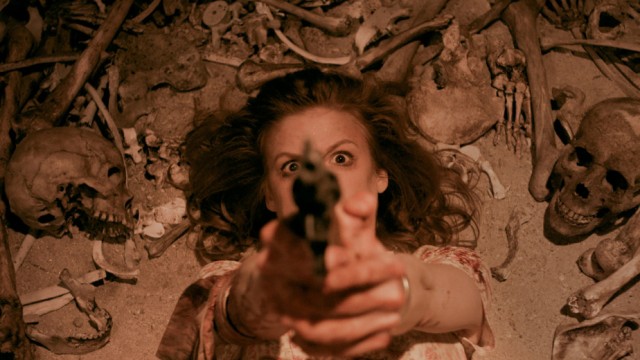In the age of sequels, remakes, and reimaginings, American pop culture has found itself asking questions about nostalgia and originality. In the wake of The Force Awakens, people questioned the fine line between homage and rehash, and whether it even mattered. Earlier this week, Film Crit Hulk went to town on J.J. Abrams and TFA, openly wondering why The Force Awakens is an immediately pleasurable experience, yet completely hollow and unable to withstand even a modicum of thought. In it, Hulk addresses Abrams’ tendency to create moments of referential movie making entirely dependent on the audience having consumed whatever the reference is.
Not that this is a new conversation. Back in the 1990s, Quentin Tarantino was throwing movies in a blender and coming out with wholly original concoctions that felt fresh and new even as they borrowed heavily from movies of the past. Reservoir Dogs pulled heavily from Ringo Lam’s City On Fire, without actually duplicating it. Pulp Fiction threw the whole film noir genre into a blender, leaving in tiny bits of references floating in a universe entirely his own. From Kiss Me Deadly‘s glowing briefcase to The Seven Year Itch, Tarantino pulled upon his video store knowledge to elevate genre movies into something transcendent; low art strives to become high art through its polishing and winking analysis of a genre.
Mickey Keating’s Carnage Park is attempting to be a new Tarantino, but he isn’t subtle about his references, frequently leaping from reference to homage and from homage to rehash. Carnage Park is an overzealous throwback to 1970s horror, complete with digital scratches in the print. It’s an overzealous movie that would love nothing more than to be an entry in Grindhouse 2. But, Keating’s references have all the subtlety of Eric Idle elbowing a guy in the ribs and saying “Wink Wink, Nudge Nudge Say No More.”
In the second scene, two men are tearing down the road in a 1960s whale of a car after a seemingly failed heist. The man in the backseat is shot and screaming in pain while the man in the front seat is screaming at him, and they’re being chased by a cop car. Right off the bat, Keating is already leaping from homage to rehash by unabashedly recreating the second scene of Reservoir Dogs. Then, jumping into From Dusk Till Dawn, they have a hostage in the trunk, released as soon as they stop in the wrong place. The bank robber (James Landry Hebert) and his hostage (Ashley Bell) stumble into a Texas Chainsaw Massacre 2/The Hills Have Eyes carnival of horrors maintained by a horrific sniper (Pat Healy) intent on striking fear into the souls of his prey before knocking them off at his leisure.
Keating borrows as heavily from the 1970s grindhouse horror movies as he does from the filmmakers inspired by those 1970s grindhouse movies. He steals as much from Tobe Hooper as he does from Rob Zombie doing Tobe Hooper. Like an overzealous film student imitating Rob Zombie’s House of 1000 Corpses, Keating doesn’t have enough faith in his mashup to let it play straight, inserting hyperactively edited montages of various cheesy subconscious horror imagery that add little to the atmosphere of dread and graphic horror.
It’s the lack of confidence that ultimately undermines this relatively solid film. Building to a finale of sensory overload, Carnage Park could have been a blast of a movie and shows promise of a decent genre filmmaker once he stops leaching off other filmmakers and finds a voice entirely of his own. Carnage Park is an ultimate calling card, displaying skill and promise but in need of a better script.

